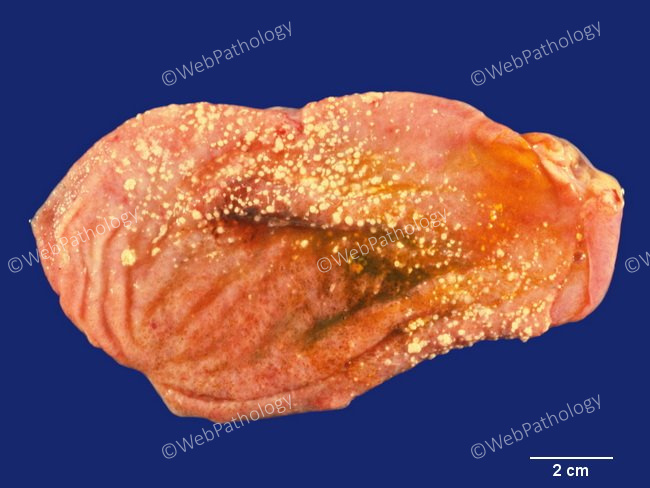Cholesterolosis : Pathogenesis


Comments:
Pathogenesis: Cholesterolosis is accumulation of cholesteryl esters and triglycerides within macrophages in the lamina propria of the gallbladder. Gallbladder epithelium normally absorbs free cholesterol from the bile. Once inside the cell, cholesterol is esterified by acyl-coenzymeA:cholesterol acyltransferase in the endoplasmic reticulum and released in the form of lipid droplets in the intercellular space. The lipid droplets are phagocytized and accumulate within the macrophages as cholesterolosis. The exact cause that triggers this cascade of events is not known.Note the patchy involvement of gallbladder by cholesterolosis in this image.



